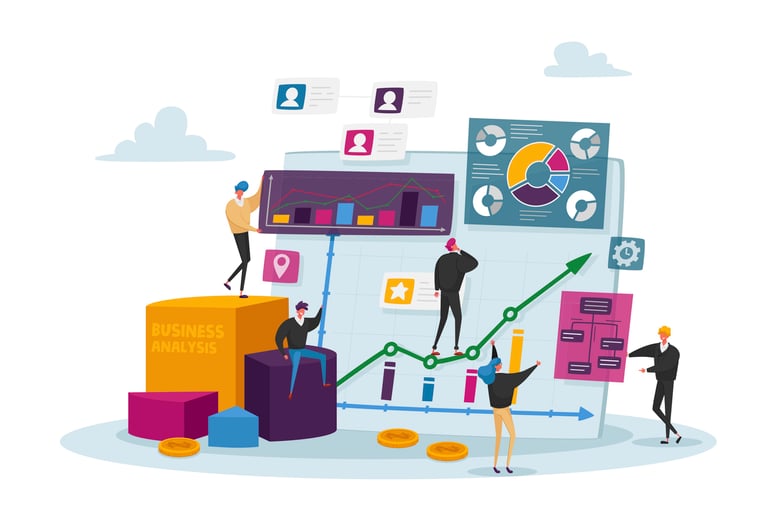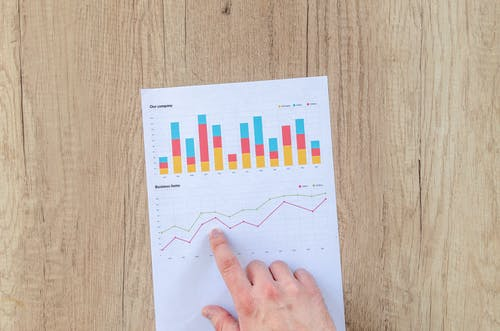

The Importance of Data in Sports Sponsorships
Data is essential to making informed, intelligent decisions about any investment, and sports sponsorships are no exception. Sponsorship spending has increased dramatically in recent years, with companies allocating more and more money to this type of marketing. According to Statista, the 2021 sports sponsorship market was more than 57 billion dollars, and that number is only projected to grow in the coming years.
So why is data so important in determining whether a sponsorship is successful? Quite simply, data allows you to answer two of the most important questions when it comes to sponsorships. First, how much exposure and brand visibility did the sponsorship provide? Second, what was the impact and return on investment from the sponsorship?
Exposure is one of the most commonly used measurements for sponsorships. After all, if a company spends money on a sponsorship campaign and no one knows about it, what’s the point? However, determining exposure can be tricky. It’s not as simple as counting how many people saw an ad or attended a game. You need to track data that accurately reflects how much exposure the sponsorship provided.
This is where data analysis comes in. By tracking data related to the sponsorship – such as website visits, social media engagement, and product sales – you can get a more accurate measure of exposure. And by comparing this data to the amount of money you spent on the sponsorship, you can determine whether the sponsorship was worth it or not.
5 Best Practices in Sports Sponsorship Data Analysis
Of course, data analysis is just one part of the sponsorship equation. You also need to take into account other factors, such as the target market and the competition. But data is a critical part of the decision-making process, and it should be a key consideration when evaluating any sponsorship opportunity.
The best way to get the most out of your sponsorship is to understand how to interpret the data and what to do once insights are uncovered. While there are a number of ways to consider the role of data in evaluating your sports sponsorship campaigns, these five best practices will provide the right foundation.
1. Track sponsorship initiatives to clearly defined KPIs
You cannot accurately track the success of a sports sponsorship without clearly defined KPIs. Key performance indicators literally define the goals of the campaign. These goals may be new revenue, conversions, or brand impressions. Regardless of your goals, you need to specify them in detail before the sponsorship begins.
Once you have defined your KPIs, the data you collect about and around the sponsorship will show you if you are tracking towards the goals or falling behind. Absent these KPIs, the data will not have sufficient context to be useful. Are one thousand impressions good? How about a million? Are five hundred new orders more or less than we expected from this sponsorship investment?
Without predefined expectations and goals, it would be impossible to know if the sponsorship was worth investing in.
2. Have a change process for in-season adjustments
In days past, sports sponsorship data would trickle back to the sponsor after a season had come to completion. Those days are gone. Relo Metrics, for example, provides near real-time data around sports sponsorships. Having in-season data is no longer a luxury but a necessity if you are to maximize the return on your sponsorship investment.
The data alone, however, is not the cure for what is ailing you. If a sponsorship is not performing to expectations and needs to be modified, it is critical to have a change process. Without a change process, different stakeholders will be following different data sets to different conclusions. Imagine a campaign that is not performing to expectations and needs modification. One person thinks the data says the location of signage is the problem. Another thinks that the color scheme and verbiage are to blame.
Without a change process, each person may set out on their own to test their own hypothesis, resulting in even more inconclusive data. You do not want in-season adjustments to be a free for all. Instead, have a defined process for making changes and testing those changes using the data.
3. Maintain a communication schedule with partners and teams
With your KPIs in place and a change-procedure set for making in-season adjustments, take care to communicate regularly with the other parties in the sponsorships. Teams, agencies, and brand owners all have a seat at the table to ensure the success of the sponsorship.
With that in mind, everyone should be eager to keep the lines of communication open. From making adjustments to underperforming campaigns to exploring ways to double down on high-performing campaigns. Clear and open communication supported by data will facilitate the best potential outcomes for all parties.
4. Follow the data, not supposition or gut
It is true that some of the most successful marketing campaigns in history were born of pure creativity instead of data. It is also true that finding success by marketing on gut or feel is not sustainable.
If you've gone through the trouble of selecting a data analytics tool to uncover insights about your sponsorships, then go ahead and commit to following the data. The data does not have an agenda. It is not working for you, the team, or the agency...it is just the quantifiable manifestation of the activity taking place. Trust the data and your decisions will be more consistent and more likely to result in high-performing campaigns.
5. Be willing to think outside the box
The data will likely take you to some unusual places. Being open-minded and trusting this analysis can open new doors and present new opportunities you may not have considered before.
For example, Germania Insurance is a long-time sponsor of the Texas Rangers. A recent in-stadium sports-sponsorship campaign was not meeting its stated KPIs. Upon investigation, the data uncovered that the signage in use too closely resembled the colors and look of a local hockey team. Fans at the game and viewers on television were not seeing Germania as they associated the color scheme with another entity entirely. Course-correcting and changing the branded materials unlocked the potential of the sponsorship, helping Germania reach its goals for that campaign.
In another example, Gatorade’s “Be like Mike” campaign from the early 1990s was one of the most iconic and successful marketing campaigns in history. The original plan was to have Gatorade available at every single NBA arena. However, when they looked at the data, they found that there were a number of cities where Gatorade was not yet available. They then shifted their focus to make sure both the product and sponsorship presence were in every city that Michael Jordan played in. This is just one example of how following the data can sometimes require a bit of creativity when it comes to adapting plans.
The Importance of Collecting and Following the Data
Each of these best practices is critically important in order to make the most of your data and achieve success with sports sponsorship. By taking the time to set up good data collection and analysis procedures, you'll be able to more accurately measure the ROI of your sponsorship and make better decisions about where to allocate your marketing resources in the future.
Sports sponsorship marketing is a complex process and it’s critical to measure your success in order to make better decisions. To learn more about how Relo Metrics can provide the data necessary to get the most out of your sports sponsorships, contact us here.
